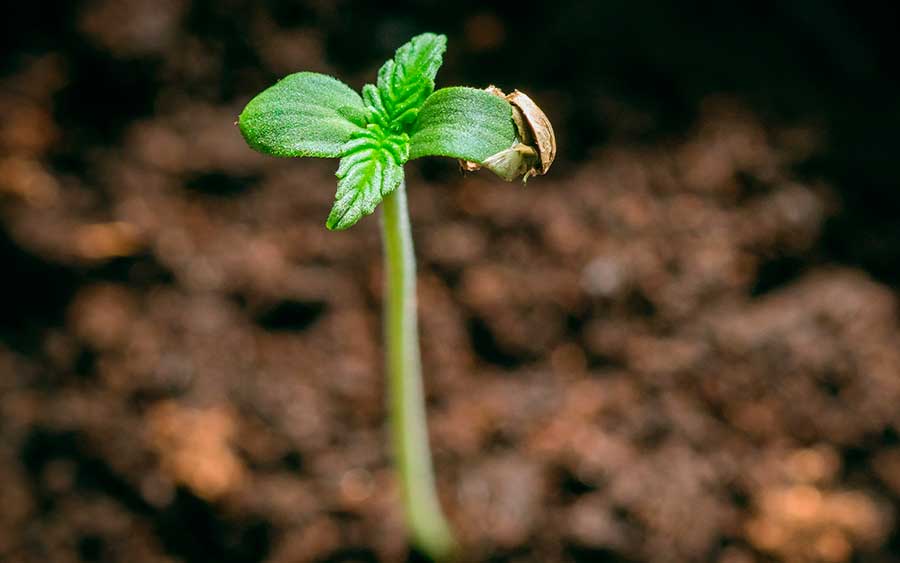
Baby Weed Plant Care: A Comprehensive Guide to Nurturing Your Seedlings
Introduction
Baby weed plants, also known as seedlings, are the delicate first stage of a plant’s life cycle. They require special care and attention to ensure their survival and healthy growth. This comprehensive guide will provide you with all the essential information you need to care for your baby weed plants, from germination to transplanting.
Germination
Germination is the process by which a seed sprouts and begins to grow. It is a critical stage in the life of a plant, and it is important to provide the right conditions for successful germination.
Choosing the Right Seeds
The first step is to choose high-quality seeds from a reputable source. Look for seeds that are plump and free of any damage or discoloration.
Preparing the Growing Medium
The growing medium for baby weed plants should be well-draining and aerated. A mixture of peat moss, perlite, and vermiculite is a good option. The pH of the growing medium should be between 5.5 and 6.5.
Sowing the Seeds
Sow the seeds shallowly in the growing medium, about 1/4 inch deep. Space the seeds evenly, and do not overcrowd them.
Watering
Water the seeds gently with a spray bottle or a watering can with a fine nozzle. Do not overwater, as this can drown the seeds.
Light
Baby weed plants need plenty of light to germinate. Place them in a warm, sunny location, or under grow lights.
Temperature
The ideal temperature for germination is between 70 and 80 degrees Fahrenheit.
Humidity
High humidity is important for germination. You can increase the humidity by covering the seeds with a clear plastic dome or by placing them in a humidity tray.
Emergence
Most weed seeds will germinate within 1-2 weeks. Once the seedlings have emerged, remove the plastic dome or humidity tray.
Seedling Care
Once the seedlings have emerged, they need to be cared for properly to ensure their healthy growth.
Watering
Water the seedlings regularly, but do not overwater. Allow the top inch of soil to dry out before watering again.
Light
Baby weed plants need plenty of light to grow. Place them in a sunny location, or under grow lights.
Temperature
The ideal temperature for baby weed plants is between 65 and 75 degrees Fahrenheit.
Fertilizing
Baby weed plants do not need to be fertilized until they have developed their first set of true leaves. Once they have developed true leaves, you can fertilize them with a balanced fertilizer.
Transplanting
Once the baby weed plants have developed their first set of true leaves, they can be transplanted into individual pots or into the garden.
Hardening Off
Before transplanting the baby weed plants into the garden, they need to be hardened off. This process involves gradually exposing them to the outdoor environment. Start by placing them outside for a few hours each day, and gradually increase the amount of time they spend outdoors.
Transplanting
When transplanting the baby weed plants, dig a hole that is twice as wide as the root ball. Place the seedling in the hole and backfill with soil. Tamp down the soil around the seedling to remove any air pockets.
Aftercare
After transplanting, water the baby weed plants deeply. Continue to water them regularly, and fertilize them every few weeks.
Troubleshooting
Seedlings Not Germinating
- The seeds may be old or damaged.
- The growing medium may be too wet or too dry.
- The temperature may be too high or too low.
Seedlings Damping Off
- The growing medium is too wet.
- The air circulation is poor.
- The seedlings are overcrowded.
Seedlings Leggy
- The seedlings are not getting enough light.
- The temperature is too high.
Seedlings Wilting
- The seedlings are not getting enough water.
- The temperature is too high.
- The seedlings are rootbound.
Conclusion
Baby weed plant care is essential for ensuring the survival and healthy growth of your plants. By following the tips and advice in this guide, you can provide your baby weed plants with the best possible care and help them thrive.
